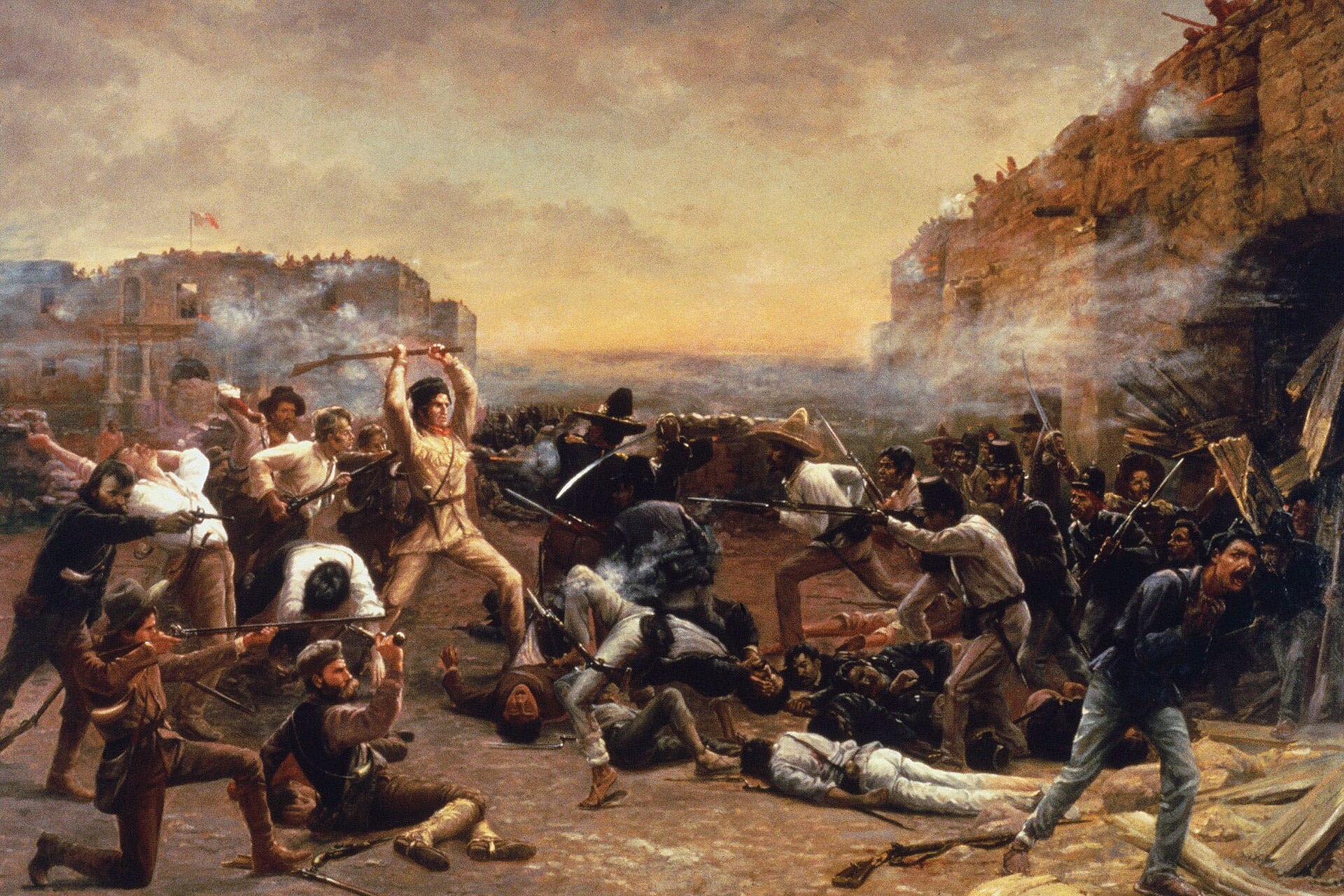“Davy, Davy Crockett, king of the wild frontier…Davy, Davy Crockett, the man who don’t know fear…”
The Ballad of Davy Crockett was the anthem of baby boomers all over the world. Kids — well, boys anyway — ran around with their coonskin hats and toy guns, emulating the frontier folk hero who briefly dominated 1950s pop culture. But who was the man behind this early craze?
Background
Many details of Crockett’s life have been exaggerated or are just downright false. Despite the ballad, he wasn’t born on a mountaintop but in a valley. As an adult, he looked rather portly. He certainly didn’t kill a bear at the age of three. And although this remains controversial, it’s likely he didn’t fall heroically at the Alamo but surrendered and was executed.
However, the frontier was in his blood even before he was born. Davy Crockett’s father John was one of the Overmountain Men, pioneers who fought during the American Revolution.
Despite John Crockett’s heroics, the family fell on hard times. Davy had a brief stint in school but ran away due to difficult teachers and bullies. Soon, he had to work as an indentured servant to support the family.
Though he was illiterate and did not have many other prospects, the early toughness he developed helped him find his calling. He became a hunter, frontiersman, and cowboy, traveling all over the West.
For a time, he earned a decent income hunting bears. One year, he killed 105 of them.
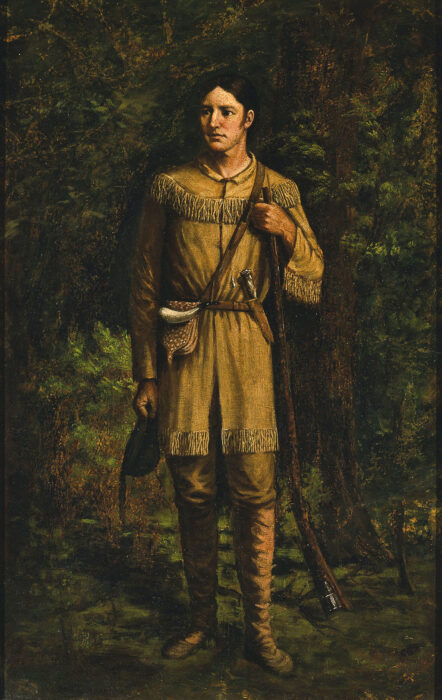
A portrait of Davy Crockett. Photo: William Henry Huddle (1889)
Crockett also joined the military, which was working hard to quell tensions between settlers and native groups. Like many others, he joined in response to the Fort Mins Massacre in Alabama. Future president Andrew Jackson was the militia’s general. Crockett worked as a scout and took the lead in hunting for food.
Crockett preferred to stay away from major combat and was not in favor of dehumanizing native people. He recalled disapprovingly how “we now shot them like dogs; and then set the houses on fire…”
He fought in the War of 1812 and Creek War.
Politics
Not enjoying the life of a soldier, he eventually chose to go into politics. He became quite popular — a common, simple hunter turned politician was a novelty at the time. He became a public commissioner, then a judge, and served as the Representative of Tennessee. His proposals sought to help the poor but never really came to fruition.
What really frazzled him was Andrew Jackson’s 1830 Indian Removal Act. Crockett was one of the Act’s strongest opponents. He refused to participate in the killing of indigenous warriors. His stance cost him the next term as a representative. This began an unstable pattern in his political career. He lost and won several times.
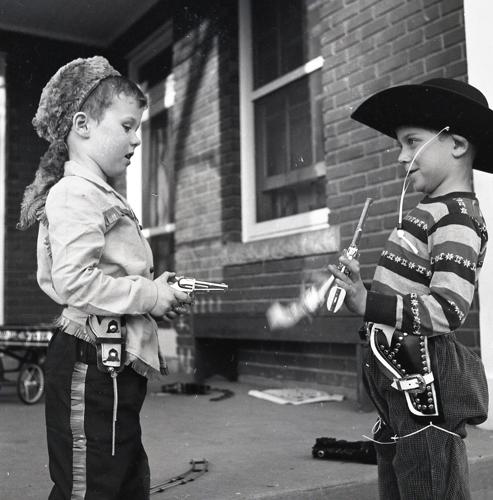
1950s kids during the Davy Crockett craze. Photo: Iredell County Public Library
Crockett went to Texas to revamp his political career. As he wrote in an 1836 newspaper: “I told the people of my district that I would serve them as faithfully as I had done; but if not, they might go to hell, and I would go to Texas…”
Little did he know that it was in Texas that his fate would be decided. The story of Crockett gets a little murky from here. After he died at the Battle of the Alamo, sources said he either surrendered and was executed or went down fighting in a blaze of glory. Television executives preferred the second ending.
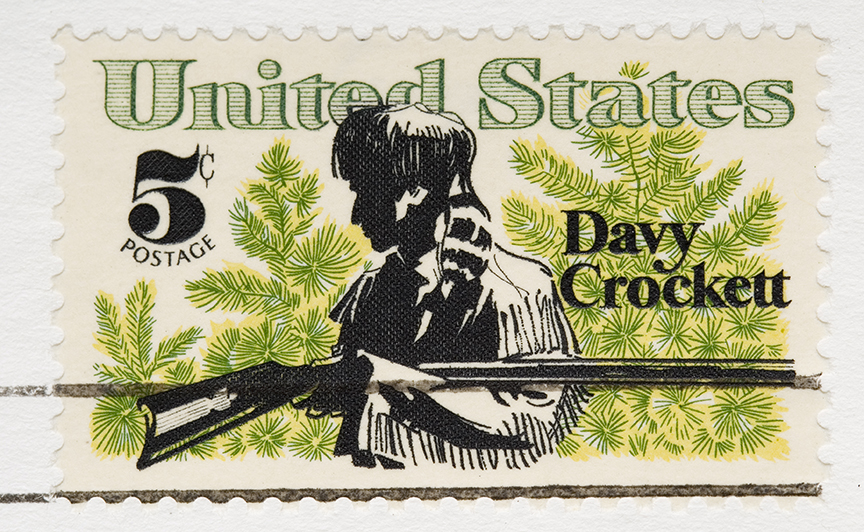
A 1967 Davy Crockett stamp. Photo: Shutterstock
Legacy
What turned this long-dead, almost obscure figure into an overnight sensation in the 1950s? A play called The Lion of the West, written in 1831, originally made him a bit of a folk hero. But he hit the big time in 1954.
Walt Disney Studios was still recovering from the Second World War. Pop culture had stagnated. The creatives over at Disney planned to turn things around. Thus began the development of Disneyland.
However, the vision went beyond amusement parks. Disney began an invasion of TV screens, and the hour-long Sunday Disney program became an institution. As part of their Frontierland series, they highlighted historical American figures. Crockett was one of their first and most popular.
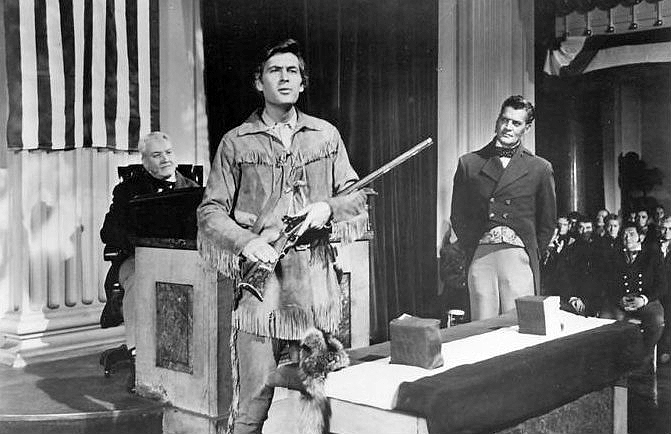
Fess Parker as Davy Crockett. Photo: Walt Disney Studios
The Davy Crockett miniseries starring Fess Parker became an overnight hit. Young boys were thrilled by gunfights with Indians, river pirates, bears, and heroics at the Alamo. They wore imitative fringed leather jackets and coonskin hats.
Crockett became the quintessential American hero, sympathetic to the Indians yet firm when confronting trouble. He was kind yet fearless and opinionated, always ready to help others. Davy Crockett represented hope and post-war optimism.
He even made his mark on the nuclear arms race between America and the Soviet Union. The U.S. Army chose the heroic name “Davy Crockett” for a launcher that fired nuclear missiles.
Conclusion
Davy Crockett was dead for over a century before he experienced his overnight rise to fame. He took America and the United Kingdom by storm and formed an integral part of baby boomers’ childhoods. Though his background featured embellishments and artistic license, the man was humble and tried to do right. And his humanistic attitude toward America’s native people in an era rife with conflict was decades ahead of its time.
